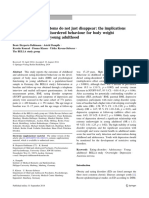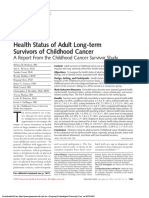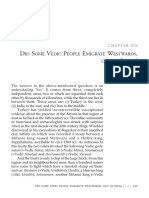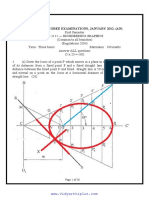0 ratings0% found this document useful (0 votes)
3 viewsPark 2012
Park 2012
Uploaded by
mv76jvykypCopyright:
© All Rights Reserved
Available Formats
Download as PDF, TXT or read online from Scribd
Park 2012
Park 2012
Uploaded by
mv76jvykyp0 ratings0% found this document useful (0 votes)
3 views2 pagesOriginal Title
park2012
Copyright
© © All Rights Reserved
Available Formats
PDF, TXT or read online from Scribd
Share this document
Did you find this document useful?
Is this content inappropriate?
Copyright:
© All Rights Reserved
Available Formats
Download as PDF, TXT or read online from Scribd
Download as pdf or txt
0 ratings0% found this document useful (0 votes)
3 views2 pagesPark 2012
Park 2012
Uploaded by
mv76jvykypCopyright:
© All Rights Reserved
Available Formats
Download as PDF, TXT or read online from Scribd
Download as pdf or txt
You are on page 1of 2
studies that have investigated the relationship between and Lien.
Drafting of the manuscript: Halvorsen and Vleu-
acne and BMI. gels. Critical revision of the manuscript for important in-
Strengths of this study are the many participants and tellectual content: Vleugels, Bjertness, and Lien. Statisti-
the high participation rate, and thus its representative- cal analysis: Halvorsen. Obtained funding: Halvorsen and
ness. An additional strength is the inclusion of relevant Bjertness. Administrative, technical, and material sup-
variables in the adjusted analyses, especially mental dis- port: Halvorsen and Bjertness. Study supervision: Vleu-
tress, which reflects symptoms of depression and anxi- gels, Bjertness, and Lien.
ety, and dietary parameters. In addition; the results in Financial Disclosure: None reported.
both girls and boys were the same when overweight and Funding/Support: This study was supported in part by The
obesity were defined as being above the 85th percentile. University of Oslo and Norwegian Institute of Public
Limitations of the study include the cross-sectional Health, The Regional Center for Child and Adolescent Men-
design, which makes interpretation of causality diffi- tal Health, Eastern and Southern Norway; The University
cult, and the use of self-reported data on BMI and acne, of Oslo and Norwegian Institute of Public Health for Plan-
which can allow for measurement errors. However, the ning, Conducting and Funding of Youth 2004.
acne question used has been previously validated, and Role of the Sponsors: The sponsors had no role in the
the BMI prevalences were similar to findings among 18- design and conduct of the study; in the collection, analy-
year-old adolescents from the United Kingdom and the sis, and interpretation of data; or in the preparation, re-
United States.3,7,8 Another limitation is that there were view, or approval of the manuscript.
no data available on total caloric intake in this popula- Additional Contributions: Florence Dalgard, MD, PhD,
tion. Finally, despite the ability to control for age at men- helped collect data and reviewed the article.
arche, which is known to be related to hormonal status
1. Burton JL, Cunliffe WJ, Stafford I, Shuster S. The prevalence of acne vul-
and development of polycystic ovarian syndrome garis in adolescence. Br J Dermatol. 1971;85(2):119-126.
(PCOS),13 it was not possible to directly control for se- 2. Kilkenny M, Merlin K, Plunkett A, Marks R. The prevalence of common skin
rum hormone levels or for a diagnosis of PCOS, which conditions in Australian school students: 3, acne vulgaris. Br J Dermatol. 1998;
139(5):840-845.
has a known association with acne and obesity in ado- 3. Halvorsen JA, Stern RS, Dalgard F, Thoresen M, Bjertness E, Lien L. Sui-
lescents.13,14 Despite the findings demonstrating a rela- cidal ideation, mental health problems, and social impairment are in-
creased in adolescents with acne: a population-based study. J Invest Dermatol.
tionship between acne and overweight and obesity in girls 2011;131(2):363-370.
aged 18 and 19 years, the study limitations do not allow 4. Spencer EH, Ferdowsian HR, Barnard ND. Diet and acne: a review of the
the straightforward interpretation that obesity causes acne. evidence. Int J Dermatol. 2009;48(4):339-347.
5. Halvorsen JA, Dalgard F, Thoresen M, Bjertness E, Lien L. Is the association
To our knowledge, this is the first population-based between acne and mental distress influenced by diet? results from a cross-
study of acne and BMI in adolescents. Given the impor- sectional population study among 3775 late adolescents in Oslo, Norway.
tance of this common skin problem, along with the in- BMC Public Health. 2009;9:340.
6. Ogden CL, Flegal KM, Carroll MD, Johnson CL. Prevalence and trends in
creasing prevalence of both overweight and obesity in chil- overweight among US children and adolescents, 1999-2000. JAMA. 2002;
dren and adolescents, further exploration is warranted into 288(14):1728-1732.
7. Halvorsen JA, Braae Olesen A, Thoresen M, Holm JO, Bjertness E, Dalgard
the association between BMI and acne in this age group. F. Comparison of self-reported skin complaints with objective skin signs among
adolescents. Acta Derm Venereol. 2008;88(6):573-577.
Jon Anders Halvorsen, MD, PhD 8. Cole TJ, Bellizzi MC, Flegal KM, Dietz WH. Establishing a standard defini-
tion for child overweight and obesity worldwide: international survey. BMJ.
Ruth Ann Vleugels, MD, MPH 2000;320(7244):1240-1243.
Espen Bjertness, PhD 9. World Health Organization. BMI classification. http://apps.who.int/bmi
/index.jsp?introPage=intro_3.html. Accessed February 8, 2010.
Lars Lien, MD, PhD 10. Tsai MC, Chen W, Cheng YW, Wang CY, Chen GY, Hsu TJ. Higher body
mass index is a significant risk factor for acne formation in schoolchildren.
Author Affiliations: Department of Dermatology, Oslo Uni- Eur J Dermatol. 2006;16(3):251-253.
11. Borgia F, Cannavò S, Guarneri F, Cannavò SP, Vaccaro M, Guarneri B.
versity Hospitalet, Faculty of Medicine (Dr Halvorsen), De- Correlation between endocrinological parameters and acne severity in adult
partment of Community Medicine (Drs Halvorsen and women. Acta Derm Venereol. 2004;84(3):201-204.
Bjertness), and Department of Mental Health and Addic- 12. Bourne S, Jacobs A. Observations on acne, seborrhoea, and obesity. Br Med
J. 1956;1(4978):1268-1270.
tion (Dr Lien), University of Oslo, Oslo, Norway; Depart- 13. Rosenfield RL. Clinical review: Identifying children at risk for polycystic ovary
ment of Dermatology, Brigham and Women’s Hospital, and syndrome. J Clin Endocrinol Metab. 2007;92(3):787-796.
Division of Allergy and Immunology, Children’s Hospi- 14. Pfeifer SM, Kives S. Polycystic ovary syndrome in the adolescent. Obstet Gy-
necol Clin North Am. 2009;36(1):129-152.
tal Boston, Harvard Medical School, Boston, Massachu-
setts (Dr Vleugels); Tibet University Medical College, Lhasa,
Tibet (Dr Bjertness); and Department of Research, Hos- COMMENTS AND OPINIONS
pital Innlandet Trust, Brumundal, Norway (Dr Lien).
Correspondence: Dr Halvorsen, Department of Derma-
tology, Oslo University Hospitalet, Faculty of Medicine,
N-0027, Oslo, Norway (j.a.halvorsen@medisin.uio.no or Narrowband UV-B Phototherapy During
jander-h@online.no). Pregnancy and Folic Acid Depletion
Author Contributions: Drs Halvorsen, Bjertness, and Lien
had full access to all of the data in the study and take re-
sponsibility for the integrity of the data and the accu-
racy of the data analysis. Study concept and design:
Halvorsen and Bjertness. Acquisition of data: Bjertness.
Analysis and interpretation of data: Halvorsen, Vleugels,
W e read with interest Zeichner’s1 case report
of acne vulgaris during pregnancy treated
successfully with narrowband UV-B (NB-
UV-B) therapy. Generally, UV-B is considered a safe form
of psoriasis therapy during pregnancy, and this may ap-
ARCH DERMATOL/ VOL 148 (NO. 1), JAN 2012 WWW.ARCHDERMATOL.COM
132
©2012 American Medical Association. All rights reserved.
Downloaded From: http://archderm.jamanetwork.com/ by a New York University User on 06/07/2015
ply to acne treatment as well. However, it is of utmost Author Affiliations: Department of Dermatology, Uni-
importance not to overlook the photodegradation of fo- versity of California, San Francisco, San Francisco, Cali-
lic acid associated with light therapy. fornia (Drs Park Murase); Department of Dermatology,
Folic acid deficiency is associated with the develop- Palo Alto Foundation Medical Group, Mountain View,
ment of neural tube defects, which complicate 1 in ev- California (Dr Murase).
ery 1000 pregnancies and can be detected early in the Correspondence: Dr Murase, Department of Dermatol-
second trimester. There is new evidence in patients with ogy, Palo Alto Foundation Medical Group, 701 E El
psoriasis that high cumulative NB-UV-B doses cause a Camino Real (31-104), Mountain View, CA 94040
proportionate decrease in serum folic acid levels (ⱖ118.16 (jemurase@gmail.com).
J/cm2 in 36 treatments).2 Previous studies found insig- Financial Disclosure: None reported.
nificant decreases in serum folic acid; however, these stud-
1. Zeichner JA. Narrowband UV-B phototherapy for the treatment of acne vul-
ies had smaller numbers of treatments and had lower total garis during pregnancy. Arch Dermatol. 2011;147(5):537-539.
cumulative doses (6.9 J/cm2 in 9-15 sessions in 19 pa- 2. El-Saie LT, Rabie AR, Kamel MI, Seddeik AK, Elsaie ML. Effect of narrow-
tients; 2.3 J/cm2 in 18-20 treatments in 35 patients).2 Fur- band ultraviolet B phototherapy on serum folic acid levels in patients with
psoriasis. Lasers Med Sci. 2011;26(4):481-485.
thermore, a more recent pilot study found that patients’ 3. Juzeniene A, Stokke KT, Thune P, Moan J. Pilot study of folate status in healthy
folic acid levels decreased after broadband UV-B therapy volunteers and in patients with psoriasis before and after UV exposure. J Pho-
tochem Photobiol B. 2010;101(2):111-116.
(110-220 mJ/cm2 in 7-22 treatments).3 In addition, there 4. Lapunzina P. Ultraviolet light-related neural tube defects? Am J Med Genet.
was a case report in Buenos Aires of 3 unrelated patients 1996;67(1):106.
who had sunbed exposure in early pregnancy; their in- 5. Murase JE, Koo JY, Berger TG. Narrowband ultraviolet B phototherapy in-
fluences serum folate levels in patients with vitiligo. J Am Acad Dermatol. 2010;
fants all developed neural tube defects, which may have 62(4):710-711.
resulted from folic acid depletion.4 6. DUSA Pharmaceuticals Inc. Light dose ranging study of photodynamic
To address this practice gap, dermatologists should therapy (PDT) with levulan ⫹ blue light versus vehicle ⫹ blue light in
severe facial acne. http://www.clinicaltrials.gov/ct2/show/results/NCT00706433
consider measuring folic acid levels periodically or con- ?term=DUSA+Pharmaceuticals&rank=1. Accessed August 30, 2011.
sulting with the patient’s obstetrician to determine ap-
propriate folic acid supplementation in their pregnant
UV-B phototherapy patients, particularly during the first
trimester. In female patients undergoing phototherapy
Interferon-␥ Release Assay
who may become pregnant or who are planning a preg-
nancy, folic acid supplementation should be encour-
aged. In a normal pregnancy, about 0.5 mg/d of folic acid
is recommended. High-risk patients can take as much as
4 to 5 mg/d, but it is necessary to rule out vitamin B12
deficiency when prescribing over 1 mg/d.5
R eaders of a recent article published in the Ar-
chives about the usefulness of an interferon-␥
release assay in diagnosing erythema indura-
tum1 might like to put that work in historical and tech-
nical perspective. Many years ago, a medical student
Interestingly, patients with fairer skin types tend to
experience decreased folic acid levels after UV expo- (L.M.M.), wondering why lymphocytes infiltrated vi-
sure. Pigment in darker skin types may also confer pro- rus-infected tissues, teamed up with an immunologist
tection against the photolysis of folic acid. Because the (B.H.W.) working in the emerging field of lympho-
patient in Zeichner’s1 case report had type III skin, fo- kines. They hypothesized that sensitized lymphocytes
late supplementation might have been less of a concern. challenged by a specific antigen might release an inhibi-
Furthermore, Zeichner1 mentions several other light- tor of viral replication. Since tuberculin reactivity was a
based therapies for acne and comments on the lack of standard (and nonviral) manifestation of delayed-type
reliable randomized controlled trials for these thera- hypersensitivity, they took lymphocytes from mice im-
pies. Blue light (BLU-U; DUSA Pharmaceuticals Inc) is munized with PPD (purified protein derivative, used in
approved by the US Food and Drug Administration for tuberculosis skin testing), challenged them in vitro
the treatment of moderate inflammatory acne vulgaris. with PPD, and found that those lymphocytes secreted
A phase 2 randomized, controlled, investigator- an inhibitor of vesicular stomatitis virus growth.2 That
blinded, clinical trial of moderate to severe facial acne secreted inhibitor eventually became known as inter-
in 266 patients was previously performed, but the data feron-␥, and the basics of that original test have been re-
remain unpublished.6 The objective was to determine the capitulated in several interferon-␥ release assays for tu-
safety and efficacy of blue light monotherapy compared berculosis.3
with combination blue light and aminolevulinic acid Leonard M. Milstone, MD
therapy. Both the blue light monotherapy and combina- Byron H. Waksman, MD
tion groups demonstrated a statistically significant re-
duction in the number of inflammatory lesions (41.7% Author Affiliations: Department of Dermatology, Yale
and 37.5%, respectively) (P ⬍.001 for both). This study University School of Medicine, New Haven, Connecti-
further reinforces the author’s suggestion that different cut (Dr Milstone). Dr Waksman retired, formerly affili-
forms of light therapy may be helpful in treating acne dur- ated with Yale University School of Medicine.
ing pregnancy, when other forms of therapy may be con- Correspondence: Dr Milstone, Department of Derma-
traindicated. tology, Yale University School of Medicine, PO Box
208059, New Haven, CT 06520 (leonard.milstone@yale
Kelly K. Park, MD .edu).
Jenny E. Murase, MD Financial Disclosure: None reported.
ARCH DERMATOL/ VOL 148 (NO. 1), JAN 2012 WWW.ARCHDERMATOL.COM
133
©2012 American Medical Association. All rights reserved.
Downloaded From: http://archderm.jamanetwork.com/ by a New York University User on 06/07/2015
You might also like
- Connie Mason - A Touch So WickedDocument173 pagesConnie Mason - A Touch So WickedlndewarenneNo ratings yet
- Pediatrics 2014 Taveras 1013 22Document12 pagesPediatrics 2014 Taveras 1013 22dcraneNo ratings yet
- 1993 - BARKER Et Al - Fetal Nutrition and Cardiovascular Disease in Adult LifeDocument4 pages1993 - BARKER Et Al - Fetal Nutrition and Cardiovascular Disease in Adult LifeSamanta MonteiroNo ratings yet
- Overweight and Obesity Among White, Black, and Mexican American Children: Implications For When To InterveneDocument10 pagesOverweight and Obesity Among White, Black, and Mexican American Children: Implications For When To InterveneSasha Hidayat FullNo ratings yet
- 26 Audh Ampun Aduh AmpunDocument3 pages26 Audh Ampun Aduh Ampundel AjjahNo ratings yet
- Adverse Childhood ExperiencesDocument8 pagesAdverse Childhood ExperiencesMa. Alicia Jimenez MartinezNo ratings yet
- Tdah 2Document11 pagesTdah 2Roberto Alexis Molina CampuzanoNo ratings yet
- Characteristics of Children 2 To 5 Years of Age With Severe ObesityDocument10 pagesCharacteristics of Children 2 To 5 Years of Age With Severe ObesityIvan BurgosNo ratings yet
- Fetal Origins Research Study (Prelim Exam)Document8 pagesFetal Origins Research Study (Prelim Exam)raymund pabilarioNo ratings yet
- Developmental Origins of Health and DiseaseDocument20 pagesDevelopmental Origins of Health and DiseaseNassiba OrbhNo ratings yet
- Origins of Adolescent Obesity and Hypertension: SciencedirectDocument2 pagesOrigins of Adolescent Obesity and Hypertension: SciencedirectAurnha DewhiNo ratings yet
- 2015 DOHaD (Developmental Origins of Health and Disease) and Birth Cohort ResearchDocument3 pages2015 DOHaD (Developmental Origins of Health and Disease) and Birth Cohort ResearchNguyễn Tiến HồngNo ratings yet
- Adolescent BMI at Northern Israel From Trends,.13Document15 pagesAdolescent BMI at Northern Israel From Trends,.13nkillerNo ratings yet
- J. Pediatr. Psychol. 2014 Gowey 552 61Document10 pagesJ. Pediatr. Psychol. 2014 Gowey 552 61Flavia DenisaNo ratings yet
- Smoking and CHDDocument19 pagesSmoking and CHDAnonymous NeRC5JYiSNo ratings yet
- Eating-Disordered Behaviors, Body Fat, and Psychopathology in Overweight and Normal-Weight ChildrenDocument9 pagesEating-Disordered Behaviors, Body Fat, and Psychopathology in Overweight and Normal-Weight ChildrenUSFMFPNo ratings yet
- Global Disorders of Sex Development UpdaDocument24 pagesGlobal Disorders of Sex Development Updakaroltomczyk24No ratings yet
- 157 Research Papers Supporting The Vaccine Autism LinkDocument123 pages157 Research Papers Supporting The Vaccine Autism Linkdon fabNo ratings yet
- Herpertz Dahlmann2014Document10 pagesHerpertz Dahlmann2014Jenifer C. SalazarNo ratings yet
- PIIS0015028212002592Document11 pagesPIIS0015028212002592Carolina SidabutarNo ratings yet
- 214 Research Papers Supporting The Vaccine/Autism LinkDocument180 pages214 Research Papers Supporting The Vaccine/Autism LinkGinger Taylor77% (300)
- Growth After Adenotonsillectomy For Obstructive Sleep Apnea: An RCTDocument10 pagesGrowth After Adenotonsillectomy For Obstructive Sleep Apnea: An RCTCalvin AffendyNo ratings yet
- The Grid For Evaluating Physical Fitness Wetzel Application To Children With Abnormal Bodily DimensionsDocument2 pagesThe Grid For Evaluating Physical Fitness Wetzel Application To Children With Abnormal Bodily DimensionsAniket Potnis80% (5)
- Curvas 20 de 20 Crescimento 20 Iu 20 Pediatrics 202010Document14 pagesCurvas 20 de 20 Crescimento 20 Iu 20 Pediatrics 202010Sem David Timothy SitanggangNo ratings yet
- Growth After AdenotonsillectomyDocument10 pagesGrowth After AdenotonsillectomyfriscahalimNo ratings yet
- Mellon2013 PDFDocument22 pagesMellon2013 PDFSipi SomOfNo ratings yet
- Childhood Obesity-Knowledge, Attitudes, and Practices of European Pediatric Care Providers (Pediatrics2013)Document11 pagesChildhood Obesity-Knowledge, Attitudes, and Practices of European Pediatric Care Providers (Pediatrics2013)jose matosNo ratings yet
- A Multisite Investigation of Binge Eating Behaviors in ChildrenDocument23 pagesA Multisite Investigation of Binge Eating Behaviors in ChildrenlinhamarquesNo ratings yet
- Developmental Correlates Persistent Snoring in Preschool Children: Predictors and Behavioral andDocument10 pagesDevelopmental Correlates Persistent Snoring in Preschool Children: Predictors and Behavioral andsambalikadzilla6052No ratings yet
- Quantification of Biological Aging in Young Adults: SI AppendixDocument7 pagesQuantification of Biological Aging in Young Adults: SI AppendixHahahNo ratings yet
- Changes in The Incidence of ChildhoodDocument10 pagesChanges in The Incidence of ChildhoodAroldo CantanhedeNo ratings yet
- Journal of A Ffective Disorders: Research PaperDocument7 pagesJournal of A Ffective Disorders: Research PaperangelavillateavilaNo ratings yet
- Hudson 2003Document10 pagesHudson 2003Borja Recuenco CayuelaNo ratings yet
- Research 2Document3 pagesResearch 2Princess Faniega SugatonNo ratings yet
- The Associations Between Personality Diet and Bmi in Older PeopleDocument9 pagesThe Associations Between Personality Diet and Bmi in Older PeoplesmemtsNo ratings yet
- 50 Years Ago in em T Span Class Small He Span 6Document1 page50 Years Ago in em T Span Class Small He Span 6davidisnice123No ratings yet
- Pre and Perinatal Risk Factors For Source Am J Epidemiol So 2012 Jul 1 176 1 24 31Document8 pagesPre and Perinatal Risk Factors For Source Am J Epidemiol So 2012 Jul 1 176 1 24 31adjaniyuNo ratings yet
- Examining Mental Health Disorders in Overweight and Obese Pediatric PatientsDocument13 pagesExamining Mental Health Disorders in Overweight and Obese Pediatric PatientsAnder MathiasNo ratings yet
- Prevalence of Tourette Syndrome and Chronic Tics I PDFDocument16 pagesPrevalence of Tourette Syndrome and Chronic Tics I PDFFitriazneNo ratings yet
- Outcomes/Epidemiology/Socioeconomics: Health Issues of Men: Prevalence and Correlates of Erectile DysfunctionDocument6 pagesOutcomes/Epidemiology/Socioeconomics: Health Issues of Men: Prevalence and Correlates of Erectile Dysfunctionputri windianiNo ratings yet
- Preventing Chronic Disease: Prevalence of and Risk Factors For Adolescent Obesity in Southern Appalachia, 2012Document6 pagesPreventing Chronic Disease: Prevalence of and Risk Factors For Adolescent Obesity in Southern Appalachia, 2012Makmur SejatiNo ratings yet
- A Holistic Approach To Malnutrition Follow-Up Care: Natasha Lelijveld, Marko KeracDocument2 pagesA Holistic Approach To Malnutrition Follow-Up Care: Natasha Lelijveld, Marko KeracEdith Frederick LiemNo ratings yet
- LI 2010 - Prevalence and Risk Factors of HabitualDocument9 pagesLI 2010 - Prevalence and Risk Factors of HabitualforloonstoreNo ratings yet
- Acta Paediatrica - 2019 - Svefors - Stunting Recovery From Stunting and Puberty Development in The MINIMat CohortDocument27 pagesActa Paediatrica - 2019 - Svefors - Stunting Recovery From Stunting and Puberty Development in The MINIMat CohortYaumil FauziahNo ratings yet
- Cohort Profile: NICHD Fetal Growth Studies - Singletons and TwinsDocument13 pagesCohort Profile: NICHD Fetal Growth Studies - Singletons and Twinselin luhulimaNo ratings yet
- Heads Up Plotting Children's Head Circumference - 2Document2 pagesHeads Up Plotting Children's Head Circumference - 2Guilherme De SouzaNo ratings yet
- 139disability in Prenatal Genetic CounselingDocument8 pages139disability in Prenatal Genetic CounselingStefan DincaNo ratings yet
- Cacner ImpactDocument14 pagesCacner ImpactMR2692No ratings yet
- Cronly 2018Document10 pagesCronly 2018JAVIERA FERNANDA SEPULVEDA CARONo ratings yet
- Predictors of Disruptive Behavior, Developmental Delays, Anxiety, and Affective Symptomatology Among Institutionally Reared Romanian ChildrenDocument10 pagesPredictors of Disruptive Behavior, Developmental Delays, Anxiety, and Affective Symptomatology Among Institutionally Reared Romanian ChildrenAna AmaralNo ratings yet
- Factor Analysis of The Pediatric Symptom Checklist in A Population of Children With Voiding Dysfunction And/or Nocturnal EnuresisDocument9 pagesFactor Analysis of The Pediatric Symptom Checklist in A Population of Children With Voiding Dysfunction And/or Nocturnal EnuresisCris RodriguesNo ratings yet
- 127 FullDocument13 pages127 Fullglory allexNo ratings yet
- Annot Bib C oDocument9 pagesAnnot Bib C oapi-242749560No ratings yet
- Overviewofpediatric ObesityasadiseaseDocument19 pagesOverviewofpediatric ObesityasadiseaseDavid FlorianNo ratings yet
- Childhood Antecedents To Adult Cardiovascular Disease (PedRev2012)Document13 pagesChildhood Antecedents To Adult Cardiovascular Disease (PedRev2012)jose matosNo ratings yet
- Schmidt Et Al 2017 Combined Prenatal Pesticide Exposure and Folic Acid Intake in Relation To Autism Spectrum DisorderDocument12 pagesSchmidt Et Al 2017 Combined Prenatal Pesticide Exposure and Folic Acid Intake in Relation To Autism Spectrum DisorderMicano VincentiusNo ratings yet
- Breast vs. Bottle: Differences in The Growth of Croatian InfantsDocument9 pagesBreast vs. Bottle: Differences in The Growth of Croatian InfantsBernadette Grace RetubadoNo ratings yet
- DownsyndromeDocument4 pagesDownsyndromegrafei pennaNo ratings yet
- 2019 - Pediatric Idiopathic Intracranial HypertensionDocument7 pages2019 - Pediatric Idiopathic Intracranial HypertensionilonaskorinNo ratings yet
- Eating Disorders in Boys and MenFrom EverandEating Disorders in Boys and MenJason M. NagataNo ratings yet
- Evo-Devo of Child Growth: Treatise on Child Growth and Human EvolutionFrom EverandEvo-Devo of Child Growth: Treatise on Child Growth and Human EvolutionNo ratings yet
- Suns Hot Skin Cancers Not InfographicDocument1 pageSuns Hot Skin Cancers Not Infographicmv76jvykypNo ratings yet
- Salat Problems 2010Document67 pagesSalat Problems 2010mv76jvykypNo ratings yet
- Home Phototherapy 2018Document13 pagesHome Phototherapy 2018mv76jvykypNo ratings yet
- Cicarma 2009Document6 pagesCicarma 2009mv76jvykypNo ratings yet
- VasculitisDocument282 pagesVasculitismv76jvykypNo ratings yet
- HydroPos Manual (Ver 2)Document91 pagesHydroPos Manual (Ver 2)agus budi wahyonoNo ratings yet
- Os Unit-5Document47 pagesOs Unit-5Shivam KumarNo ratings yet
- 759Document246 pages759Mateen ShukriNo ratings yet
- Zadoff-Chu Sequence Design For Random Access Initial Uplink Synchronization PDFDocument13 pagesZadoff-Chu Sequence Design For Random Access Initial Uplink Synchronization PDFRaul MarquezNo ratings yet
- DYSPEPSIA Enhanced Primary Care Pathway Dec 2016 2Document5 pagesDYSPEPSIA Enhanced Primary Care Pathway Dec 2016 2Agnes FriyantiNo ratings yet
- 8086 & 8051 Lab Manual (2023-2024)Document15 pages8086 & 8051 Lab Manual (2023-2024)pd03487No ratings yet
- Westward Migration of Vedic People - BB LalDocument7 pagesWestward Migration of Vedic People - BB LalManoharNo ratings yet
- Daftar PustakaDocument2 pagesDaftar Pustakanovita viantiNo ratings yet
- Abbott Flexiflo Quantum Infusion Pump - User ManualDocument24 pagesAbbott Flexiflo Quantum Infusion Pump - User ManualJack WhitenerNo ratings yet
- Subjective Assessment of MSK Lecture 2Document3 pagesSubjective Assessment of MSK Lecture 2Walter WanNo ratings yet
- ArgonDocument9 pagesArgonMuhamad ZakyNo ratings yet
- Quality Control in The Microbiology LaboratoryDocument5 pagesQuality Control in The Microbiology LaboratoryAnne CabreraNo ratings yet
- Part II - 07 Steel ErectionDocument10 pagesPart II - 07 Steel Erectionsalah abddayemNo ratings yet
- Books and Stationary List Class 1Document2 pagesBooks and Stationary List Class 1Michael JonesNo ratings yet
- The Awakened IntrovertDocument213 pagesThe Awakened IntrovertNexwave 02100% (6)
- ENGINEERING GRAPHICS UNIVERSITY QUESTION PAPERS With AnswersDocument36 pagesENGINEERING GRAPHICS UNIVERSITY QUESTION PAPERS With Answersculverts100% (5)
- Introduction To Mathematical EconomicsDocument164 pagesIntroduction To Mathematical Economics.cadeau01No ratings yet
- De Kiem Tra Giua Ki I - de So 2Document14 pagesDe Kiem Tra Giua Ki I - de So 2Dong Nghi Nguyen NgocNo ratings yet
- Glass Blowing EquipmentDocument7 pagesGlass Blowing EquipmentJustine VivasNo ratings yet
- Module 3 TorsionDocument13 pagesModule 3 TorsionJay LopezNo ratings yet
- Horse Reel ProjectDocument23 pagesHorse Reel ProjectpatrickNo ratings yet
- ISQ Series Installation and Basic Service - Revision 1 - SizeDocument227 pagesISQ Series Installation and Basic Service - Revision 1 - SizeWimbi KalistaNo ratings yet
- Unit IDocument24 pagesUnit IsomasundaramNo ratings yet
- Executive Summary of KJA Recommendation On Karnataka State Water Policy 2019Document55 pagesExecutive Summary of KJA Recommendation On Karnataka State Water Policy 2019junkchanduNo ratings yet
- LIT 007 Critical EvaluationDocument9 pagesLIT 007 Critical EvaluationJedidiah Daniel AzurinNo ratings yet
- 8 1 EvaporationDocument11 pages8 1 EvaporationChadColeman100% (1)
- Central Glass and Ceramic Research Institute - ProjectsDocument3 pagesCentral Glass and Ceramic Research Institute - ProjectsRavi Kant TripathiNo ratings yet
- Internorm Windows Doors2012Document43 pagesInternorm Windows Doors2012replicaderNo ratings yet
- Math G6 Q2 Mod5 v2Document45 pagesMath G6 Q2 Mod5 v2Dennis De GuzmanNo ratings yet






























































































